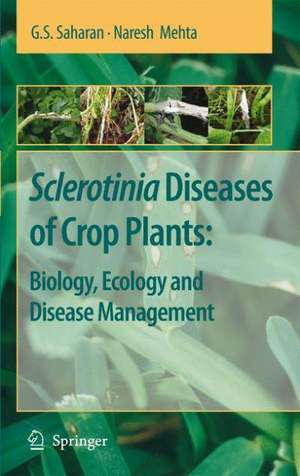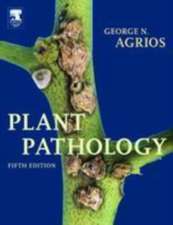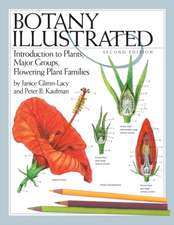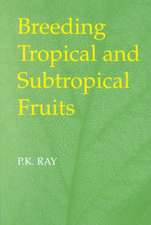Sclerotinia Diseases of Crop Plants: Biology, Ecology and Disease Management
Autor G. S. Saharan, Naresh Mehtaen Limba Engleză Paperback – 19 oct 2010
| Toate formatele și edițiile | Preț | Express |
|---|---|---|
| Paperback (1) | 1228.62 lei 6-8 săpt. | |
| SPRINGER NETHERLANDS – 19 oct 2010 | 1228.62 lei 6-8 săpt. | |
| Hardback (1) | 1237.80 lei 6-8 săpt. | |
| SPRINGER NETHERLANDS – 9 sep 2008 | 1237.80 lei 6-8 săpt. |
Preț: 1228.62 lei
Preț vechi: 1498.31 lei
-18% Nou
Puncte Express: 1843
Preț estimativ în valută:
235.12€ • 243.98$ • 196.52£
235.12€ • 243.98$ • 196.52£
Carte tipărită la comandă
Livrare economică 15-29 martie
Preluare comenzi: 021 569.72.76
Specificații
ISBN-13: 9789048178711
ISBN-10: 9048178711
Pagini: 548
Ilustrații: LXII, 486 p.
Dimensiuni: 155 x 235 x 29 mm
Greutate: 0.76 kg
Ediția:Softcover reprint of hardcover 1st ed. 2008
Editura: SPRINGER NETHERLANDS
Colecția Springer
Locul publicării:Dordrecht, Netherlands
ISBN-10: 9048178711
Pagini: 548
Ilustrații: LXII, 486 p.
Dimensiuni: 155 x 235 x 29 mm
Greutate: 0.76 kg
Ediția:Softcover reprint of hardcover 1st ed. 2008
Editura: SPRINGER NETHERLANDS
Colecția Springer
Locul publicării:Dordrecht, Netherlands
Public țintă
ResearchCuprins
Geographical Distribution.- History and Host Range.- Economic Importance.- The Disease and Symptoms.- Disease Assessment.- The Pathogen – Sclerotinia.- Reproduction and Reproductive Structures.- Ultrastructures.- Pathogenic Variability.- Perpetuation.- Infection and Pathogenesis.- Biochemistry of Host-Pathogen Interaction.- Physiology of Host-Pathogen Interaction.- Disease Cycle.- Epidemiology of Sclerotinia Diseases.- Disease Forecasting.- Disease Resistance.- Disease Management.- Sclerotinia as Mycoherbicide.- Phytotoxin, Phytoalexin, Fungal Viruses, Hypovirulence, Volatile Compounds of Sclerotinia.- Laboratory and Field Techniques.- Future Strategies and Priorities.
Textul de pe ultima copertă
Sclerotinia is one of the most devastating and cosmopolitan soil borne plant pathogen that infects more than 500 species of plants worldwide including field crops, fruit crops, ornamentals, trees, shrubs and numerous weeds. Annual yield losses due to Sclerotinia diseases exceed over millions of dollars each year world over. Extensive crop damage, lack of high levels of host resistance and the general difficulty of managing diseases caused by Sclerotinia have been the impetus for sustainable research on this pathogen.
The present book on Sclerotinia deals with the aspects on taxonomy, nomenclature, geographical distribution, economic importance, host range, the diseases caused, symptomatology, disease assessment, reproduction, ultra-structures, pathogenic variability, perpetuation, infection and pathogenesis, biochemical, molecular and physiological aspects of host pathogen interaction, seed infection, disease cycle, epidemiology and forecasting, host resistance and disease management strategies. In addition, laboratory and field techniques developed so far for Sclerotinia have been included. Some newly emerging areas of Sclerotinia research include its application as myco-herbicide, phytoalexin elicitors, hypovirulence, volatile compound imitator, sporigermin production from sclerotia, resistance to fungicides and health hazard‘s due to Sclerotinia diseases have been discussed. The subject matter is vividly illustrated with photographs (macroscopic, microscopic, electron micrographs, scanning electron micrographs), drawings, figures, histograms, graphs, tables and flow charts of techniques which make it more interesting, stimulating, effective and easy to understand by the readers. This is the first ever comprehensive compilation on different aspects of Sclerotinia and will be immense value for researchers, teachers and students.
The present book on Sclerotinia deals with the aspects on taxonomy, nomenclature, geographical distribution, economic importance, host range, the diseases caused, symptomatology, disease assessment, reproduction, ultra-structures, pathogenic variability, perpetuation, infection and pathogenesis, biochemical, molecular and physiological aspects of host pathogen interaction, seed infection, disease cycle, epidemiology and forecasting, host resistance and disease management strategies. In addition, laboratory and field techniques developed so far for Sclerotinia have been included. Some newly emerging areas of Sclerotinia research include its application as myco-herbicide, phytoalexin elicitors, hypovirulence, volatile compound imitator, sporigermin production from sclerotia, resistance to fungicides and health hazard‘s due to Sclerotinia diseases have been discussed. The subject matter is vividly illustrated with photographs (macroscopic, microscopic, electron micrographs, scanning electron micrographs), drawings, figures, histograms, graphs, tables and flow charts of techniques which make it more interesting, stimulating, effective and easy to understand by the readers. This is the first ever comprehensive compilation on different aspects of Sclerotinia and will be immense value for researchers, teachers and students.
Caracteristici
Researchers engaged in biology, epidemiology and management aspects of this ubiquitous pathogen as well as other soil borne plant pathogens will find this publication an exhaustive reference Numerous colour photographs and illustrations showing the disease symptoms of various crops attacked by Sclerotinia spp. make it easier for researchers and students and extension workers to identify the diseases Comprehensive compilation of literature on all aspects of Sclerotinia pathogens which is easily understandable by teachers, researchers and UG and PG students will save the resources for scanning the information All the specific and standardized techniques being used currently in various fields of Sclerotinia research are described












